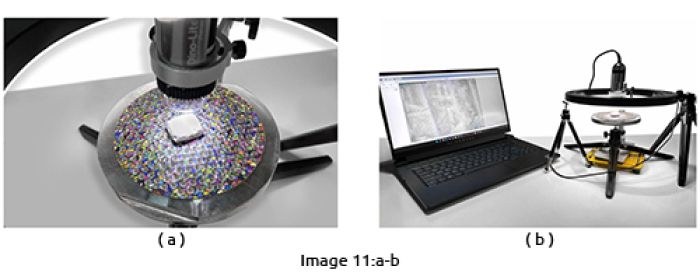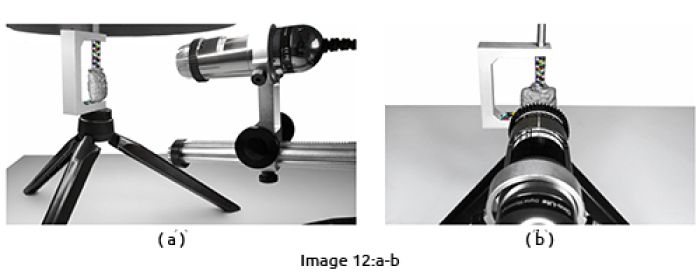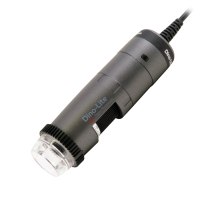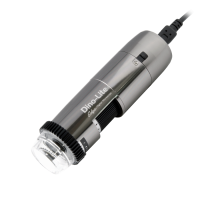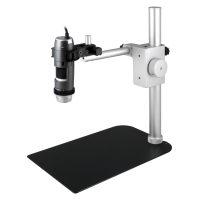Implementing the Dino-Lite USB Microscopes
as a New Micro‐Photogrammetric Tool
Photogrammetry is the art, science, and technology of obtaining reliable information about physical objects. An important part of photogrammetry is the processes used to record, measure, and interpret photographs and patterns of radiant electromagnetic energy, as well as other phenomena, in order to obtain reliable information about physical objects and the environment. Microscopes are not new in photogrammetry in general, but the integration of USB Microscopes into the process adds more flexibility and portability without compromising performance.
As 3D digital documentation becomes more widespread, the survey of tiny artifacts becomes increasingly important. In this regard, Dino-Lite USB microscopes prove to be a groundbreaking new tool for micro-photogrammetry.
Applying Dino-Lite microscope for the digitalization of a cuneiform tablet.
The research aims to address the need for a digital survey and a 3D representation of small objects complex surfaces and sub-millimeter morphological characteristics using a low-cost configuration (passive sensors) for an image-based approach.
The experiments concerned cuneiform tablets, which are challenging due to their morphological and geometrical characteristics. The digital replica of these unique artefacts can be helpful for their study and interpretation and many innovative applications: access and sharing, a collaborative interdisciplinary study among several experts, experimentation with machine learning for automatic character recognition, and linguistic studies.
These experts have used a physical replica of a cuneiform tablet with wedges to perform the first tests to evaluate the photogrammetric use of a digital microscope.
(reference to images 11:a-b)
The first acquisition configuration with the turntable calibrated plate: (a) three-dimensional
calibrated plate (updated prototype) detail; (b) complete setup configuration.
(reference to images 12:a-b)
The second acquisition configuration with the screw clamp: (a) the screw clamp coaxial to
the rotating base; (b) detail of the positioning of the tablet in the clamp.
A Dino-Lite microscope of the Long Working Distance (LWD) range was used for the tests and also in the next campaign to digitize the original cuneiform tablets. A 20x magnification was chosen to work with, at
which the working distance is 48.7 mm, and the depth of field is 3.6 mm with this model.
The model has a built-in adjustable polarizer to reduce reflections on shiny objects.
However, the lighting conditions were improved with the adoption of an LED illumination
ring. The light does not directly hit the object due to the shape and diffusing material of the
lens hood. Therefore, the diffused light conditions neutralize the shadow cones without
changes in the intensity of the shadows, light, and colors.
Source: Research conducted by the Model Lab, Department of Civil Engineering, University of Salerno.











